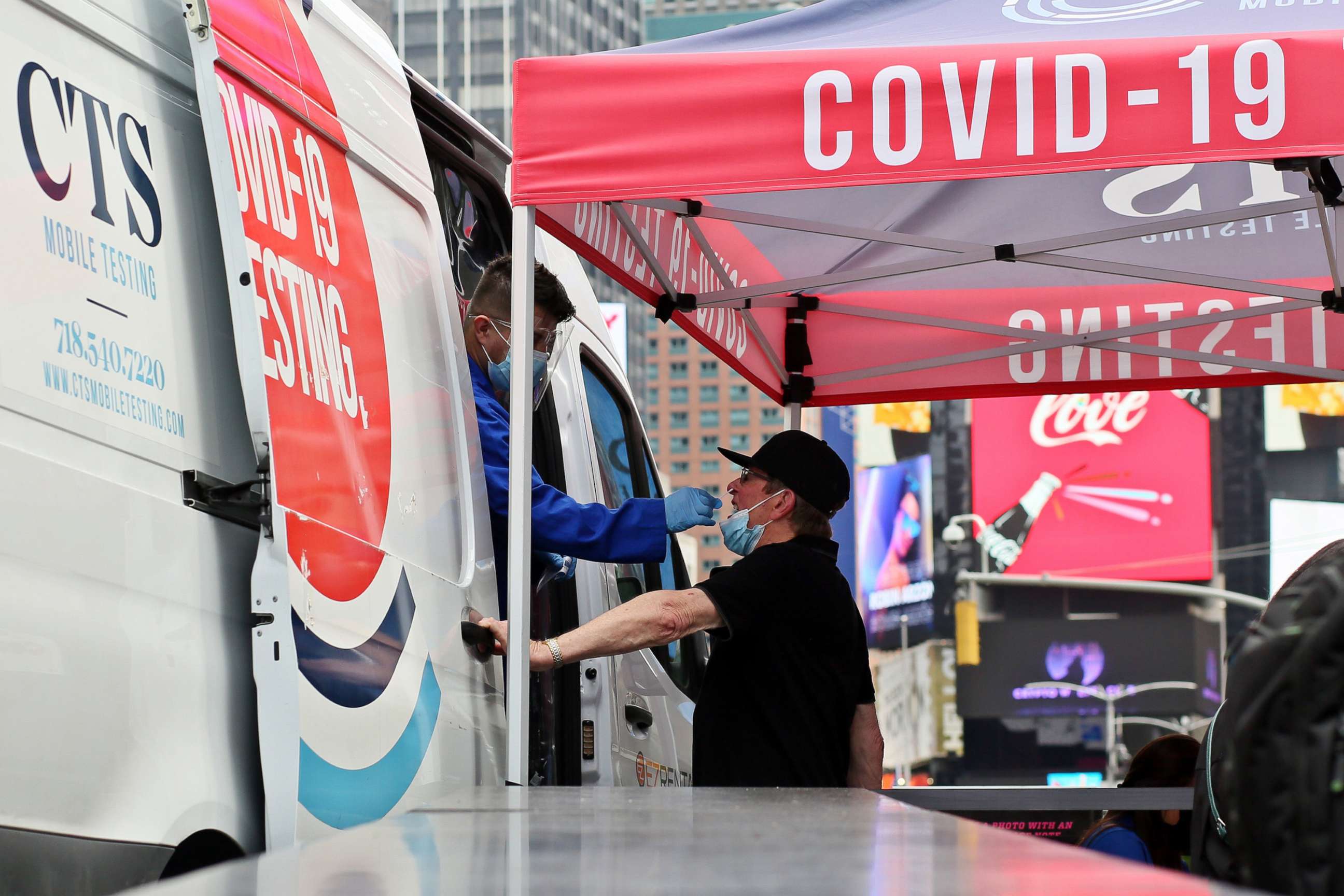Omicron subvariants threaten COVID-19 resurgence across US
BA.5 is estimated to account for more than half of new COVID cases in the U.S.
Health officials are once again raising the alarm about the threat of a resurgence of COVID-19 infections across the country, as concerns grow about the new omicron subvariant, BA.5, which is now the dominant viral strain in the U.S.
The BA.5 variant, first detected in South Africa earlier this year, is currently estimated to account for more than half -- 53.6% -- of all new COVID-19 cases in the states, according to the Centers for Disease Control and Prevention.
BA.5 appears to have a growth advantage over the original omicron variant, according to the World Health Organization, and scientists are closely monitoring the increase in reported cases observed in many countries across the globe.
At this time, BA.5 does not appear to have increased in severity, but officials have previously stressed that research on the new subvariant is still in its "early days," and much remains to be learned about it.
As BA.5 spreads, a growing proportion of U.S. counties are seeing increases in infections and related hospital admissions.

Nearly three-quarters of the U.S. population is now living in a county with a high or medium community risk level for COVID-19, as defined by the CDC, federal data shows. About one-third of those people -- 31.9%-- are living in a high-risk community, while 41.6% are living in a medium-risk county.
A high community level suggests there is a "high potential for health care system strain" and a "high level of severe disease," and the CDC recommends that people wear a mask in public indoor settings, including schools. A medium-risk level suggests there is "some impact on [the] health care system," and "more people with severe disease." Under the CDC's official guidance, individuals considered at "increased risk" are advised to speak with their health care provider about whether to wear a mask.
Counties on both coasts -- most notably in California, Montana, New Mexico and Oregon -- are moving up and entering the high-risk level. In Florida, nearly every county is currently considered high risk. Puerto Rico and California currently lead the nation in new cases per capita, followed by New York City, where officials are once again urging residents to wear high-quality masks in indoor public settings and around crowds outside, amid a renewed surge of infections in the city.
"We're currently seeing high levels of COVID-19 in NYC. To help slow the spread, all New Yorkers should wear a high-quality mask, such as an N95, KN95 or KF94 in all public indoor settings and around crowds outside," the New York City Health Department wrote in a tweet on Friday, after the city moved back into the high-risk level.
The average number of new cases across New York City is up by 25% in the last two weeks, according to federal data. City data also shows that an average of 15% of reported tests are now coming back positive, marking the highest seven-day positivity rate in months.
Nationally, the country is currently reporting an average of more than 100,000 new cases each day. However, health officials say that the total is likely significantly undercounted.

As previously reported, dozens of states have moved to shutter public testing sites, with more at-home COVID-19 tests now available in pharmacies and through the federal testing program. Most Americans are not reporting their results to officials, and, thus, experts said infection totals are likely significantly undercounted.
Last week, White House COVID Response Coordinator Dr. Ashish Jha told NBC News that hundreds of thousands of COVID-19 infections are likely going undercounted.
"There's no question in my mind we are missing the vast majority of infections right now," Jha said. "The truth is there are probably several hundred thousand -- 400,000; 500,000 infections a day happening across the country."
The concerns over BA.5 come amid the nation's continued push to get people vaccinated. Although the U.S. is set to roll out new bivalent vaccines in the fall, which will address omicron, millions of eligible Americans are still without their additional shots.
To date, less than half of eligible Americans -- 49.5% or 108.6 million people -- have received their first booster. Similarly, less than one-third -- 29.5% or 42.2 million -- of eligible Americans over the age of 50 have received their second booster.
Overall hospitalization numbers and death rates have yet to see a significant resurgence, though experts say metrics may also be undercounted, due to a lack of reporting from states.
As of July 5, about 34,000 patients are currently receiving care in U.S. hospitals across the country. This still marks one of the highest numbers of patients hospitalized with the virus since March.
On average, more than 5,200 virus-positive Americans are entering the hospital each day -- the highest number of daily admissions since February. Hospital admissions in the Southwest and the South are up by more than 10%, respectively, in the past week.
The average number of daily COVID-19-related deaths remains just below 300 reported each day. Totals are still much lower than during prior COVID-19 surges.
However, thousands of Americans are still losing their lives every week. Over the last seven days, the U.S. has reported nearly 2,000 deaths.




